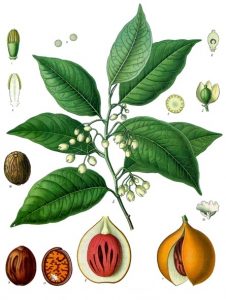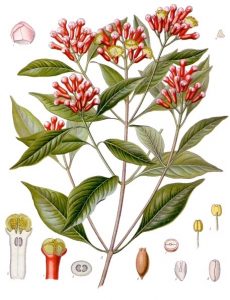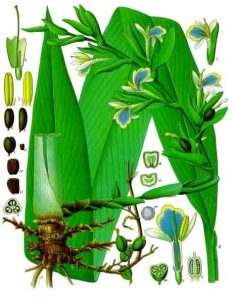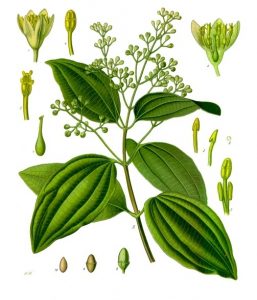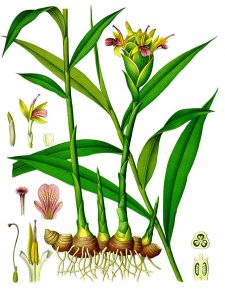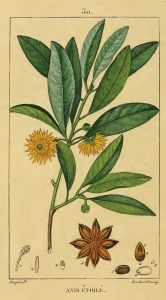By Jonathan Mitchley (heavily edited by Alastair Culham)

The first #Adventbotany post by @DrMgoeswild was an exciting medly of fruit, spices and wine.
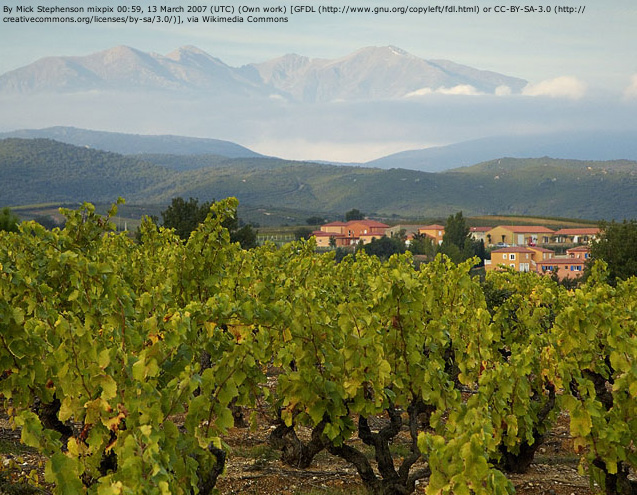
Dr M offers a botanical extravaganza with mulled wine, a drink supposedly invented by Hippocrates and for which there are recipes in English from as early as the 14th century in the form of hypocras. If you’d like to look in to the origins of mulled wine then Old Cook has a nice page on spiced wines going back to Roman times and medieval cookery has a recipe for Hypocras, the original mulled wine in English.
For a slightly more modern version and a detailed recipe Rare Cooking blog has a well illustrated account and includes rosemary as a flavouring.
The British Library has digitised Forme of Cury, a treatise on cookery by the chief cook of Richard II’s household, composed c.1390. The digitised manuscript (in the form of a scroll, not a book) is from about 1420 and includes a mulled wine receipe.
British Food: A History blog by Dr Neil Buttery includes a translation of the Ypocras receipe and comment on ingredients. They offer an excellent account of the recipe and, very importantly, remind you to strain it through muslin before drinking!
“Pur fait ypocras. Troys vnces de canell & iii vneces de gyngeuer; spykenard de Spayn, le pays dun denerer; garyngale, clowes gylofre, poeure long, noieȝ mugadeȝ, maȝioȝame, cardemonii, de chescun dm. vnce; de toutes soit fsait powdour &c.
To make hippocras. Three ounces of cinnamon and three ounces of ginger, spikenard of Spain, a pennysworth; galingale, cloves, long pepper, nutmeg, marjoram, cardamom, of each a quarter of an ounce; grain of paradise, flour of cinnamon, of each half an ounce; of all, powder is to be made etc.”
However, I would be sad to see you replace long pepper and grains of paradise with black pepper, which they suggest as a cheaper alternative. Grains of paradise, particularly, has a distinctive aromatic flavour that is difficult to substitute. Internet shopping makes even obscure spices surprisingly available.

Before you make mulled wine you need to start with grapes which form the basis of wine and differing sources offer wildly different estimates of the number of grape cultivars cultivated to make that wine. For instance Berry Bros. & Rudd in London offer a list of 143 varieties of grape from which they stock wine, while Wikipedia list 335 Red grape varieties and 418 White grape varieties used for wine making and Wine Tutor claims over 5000 varieties (but does not attempt to list them).
Once you have your wine, it is fairly easy to buy ready made mixes of mulled wine spices or you can devise your own mix to suit your taste. I’m quite eclectic and use ready mixed spices or various recipes including Delia Smith’s Christmas (all my favourite Christmas recipes are marked by sticky sugary and ingredient stained pages). For an alternative view to mine, you can read Felicity Cloake‘s How to make perfect mulled wine published in The Guardian. It’s even possible to buy ready made Hippocras.
The spice content of mulled wine has varied over time but cinnamon, ginger, nutmeg, mace, Piper longum, Star Anise, Cardamom and cloves are each listed in at least some recipes. These will feature in their own #AdventBotany blogs in due course.
The wine is brought together with the spices, citrus (usually oranges) and sugar to make the final product, mulled wine – enjoy!
There does remain a bit of a mystery, that of Spikenard of Spain, what is it and could it be the modern spikenard or nardo? The majority suggest it is Nardostachys jatamansi which is used as a producer of perfumed oil however the plant is from the Himalayas, not Spain. However, spikenard has been known in Spain since at least Medieval times and is used to represent Saint Joseph.
For more #AdventBotany see our 2020 index page.

